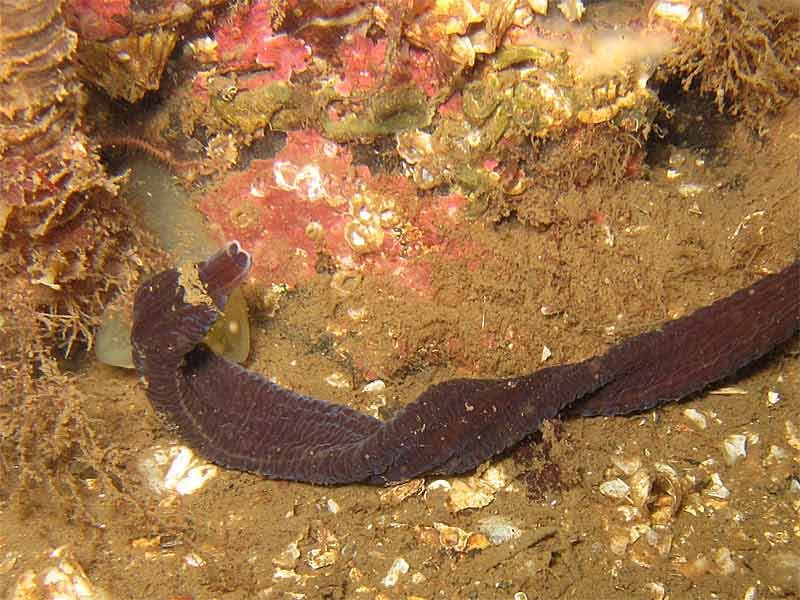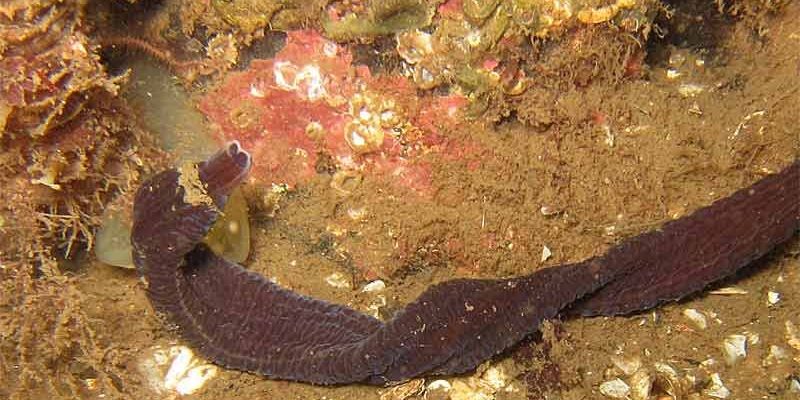
Bootlace worms are part of a group known as *Nemertea*, or ribbon worms to their friends. You might think they’re just slimy, spaghetti-like creatures, but they have fascinating adaptations and behaviors that make them crucial players in the underwater world. So, let’s dive into why these unique worms are so valuable and what they do to keep our oceans balanced.
What Are Bootlace Worms?
Bootlace worms are fascinating creatures that belong to the phylum *Nemertea*. They’re often found in shallow coastal waters, hiding in the sediment or clinging to rocks. Their long, thin bodies give them a striking resemblance to boot laces—hence their name. But there’s more to them than meets the eye.
These worms have a soft body covered in a slimy layer that helps them glide through their environment. They come in various colors, from pale pinks to deep browns, which can help them blend in with the seafloor. Sometimes, they can even change colors to evade predators! Their bodies contain special cells that produce a sticky substance, allowing them to attach firmly to surfaces. This is vital for their survival, as it helps them avoid being washed away by waves or current.
One of the most interesting features of bootlace worms is their ability to regenerate. If they lose part of their body, they can grow it back! This isn’t just a neat party trick; it’s crucial for their survival in the wild, where they face predators like fish and seabirds.
The Role of Bootlace Worms in the Food Chain
Bootlace worms play an essential role in the marine food chain. They’re not just sitting around; they actively participate in the ecosystem by serving as a food source for various animals. Think about the ocean as a big buffet, and these worms are a tasty dish for larger creatures.
Many fish and crabs enjoy munching on bootlace worms. Because they’re found throughout coastal zones, they’re an easy target for these predators. This connection is vital for maintaining a balanced food web. If bootlace worms disappeared, many fish species would suffer, leading to a ripple effect throughout the ecosystem.
In addition to being prey, bootlace worms also consume smaller organisms, like plankton and detritus. They do this by extending a specialized feeding structure called a proboscis, which can shoot out and capture their food. This feeding behavior helps control the populations of these smaller creatures, keeping the ecosystem in check.
Bootlace Worms and Sediment Health
The health of marine sediments is crucial for many life forms in the ocean, and bootlace worms contribute significantly to this. By burrowing into the seafloor, they aerate the sediment, allowing oxygen to reach other organisms that live there. This process is important because many marine creatures depend on healthy sediments for survival.
Moreover, bootlace worms help break down organic matter in the sediment. As they feed, they digest the material and recycle nutrients back into the environment. This nutrient cycling is vital for the growth of plants and other marine life, creating a rich habitat for various organisms.
Without bootlace worms, sediment could become compact and deprived of oxygen, harming countless species that rely on these habitats. Just think of them as nature’s little engineers, working tirelessly beneath the surface to keep things flowing smoothly.
Bootlace Worms as Indicators of Ocean Health
You might be wondering how bootlace worms can indicate the health of the ocean. Well, they’re sensitive to changes in their environment, making them excellent indicators of ecosystem health. If something goes wrong, like pollution or rising temperatures, these worms may not thrive. This sensitivity allows scientists to use them as bioindicators.
When researchers monitor bootlace worm populations, they can gauge the overall condition of marine habitats. A decline in bootlace worm numbers might suggest problems in the ecosystem, like contamination from runoff or disturbances from human activities. By studying these worms, scientists can better understand and address environmental issues, helping to protect delicate marine systems.
In this way, bootlace worms serve as a silent alarm system, alerting us to changes in the ocean’s health. The more we understand about them, the better we can work to maintain the balance of marine ecosystems.
Conservation and the Future of Bootlace Worms
As vital as bootlace worms are, they face numerous threats. Climate change, pollution, and habitat destruction are just a few challenges threatening their survival. Rising ocean temperatures can affect their reproduction and growth patterns, while pollution can directly impact their health and the ecosystems they inhabit.
Conservation efforts play a crucial role in protecting these unique creatures. By advocating for cleaner oceans and sustainable practices, we can help ensure that bootlace worms continue to thrive. Supporting marine protected areas is one way to provide safe habitats for these worms and other marine life.
Additionally, spreading awareness about the importance of bootlace worms can drive community involvement and encourage responsible ocean practices. Honestly, if more people understood these worms’ roles, they might think twice before littering or polluting coastal areas. Protecting our oceans is a shared responsibility, and every little action counts.
You might not see bootlace worms while snorkeling or swimming in the ocean, but they quietly go about their business, playing crucial roles in marine ecosystems. From maintaining sediment health to serving as food for various species, these worms are essential players in the broader food web.
As we face environmental challenges, understanding the value of creatures like bootlace worms can help us appreciate the complexity of our oceans. By working to protect these habitats and raising awareness of their importance, we can ensure that future generations will know and benefit from the wonders of marine ecosystems. So next time you think about ocean life, remember to tip your hat to the humble bootlace worm—they truly are the unsung heroes of the sea!

